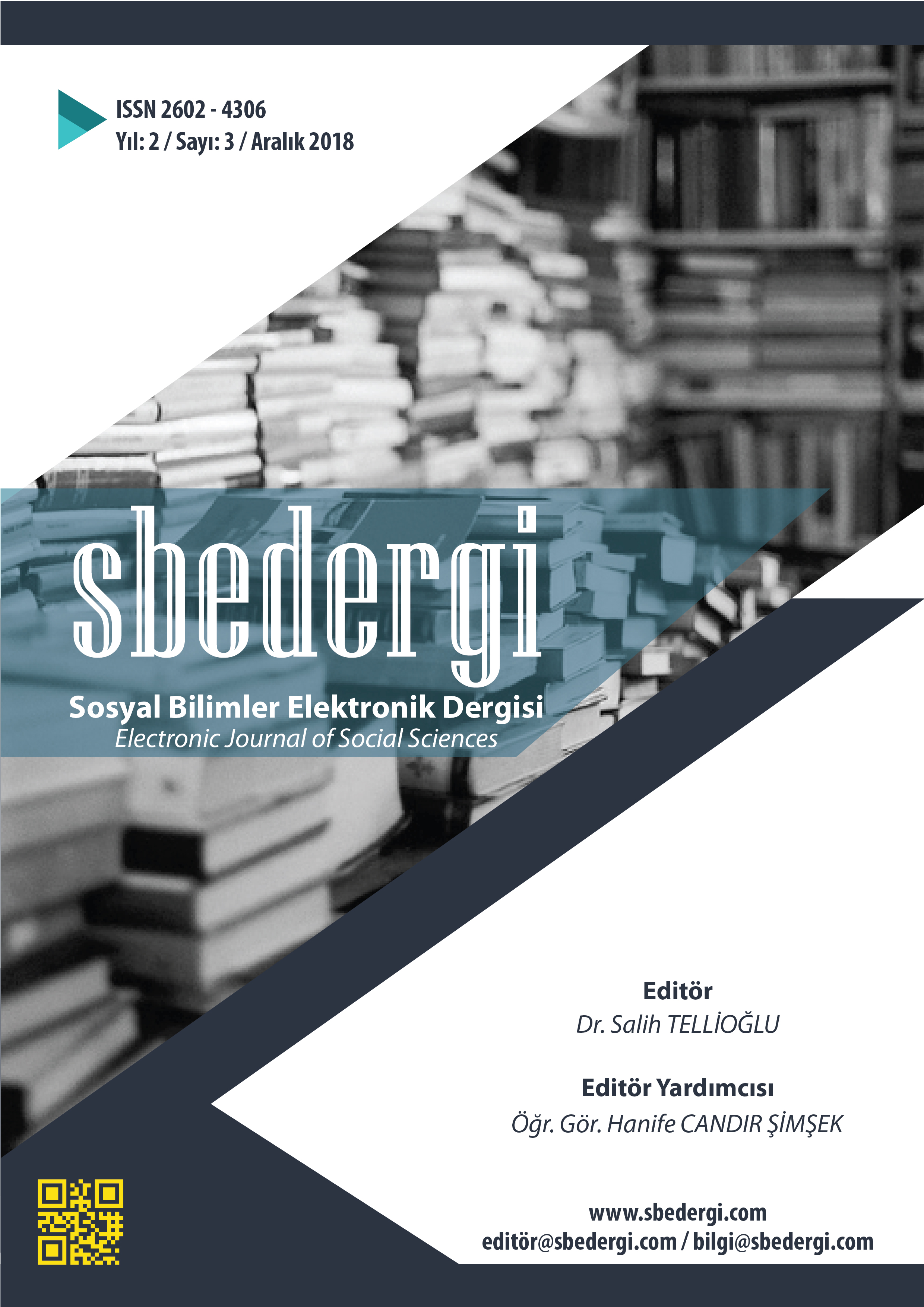Author :
Abstract
Orta Asya, AB için Çin, Afganistan ve Orta Doğu’ya açılan bir köprü niteliği taşımaktadır. Ayrıca bu bölge AB’nin enerji ithalatı için önemli bir kaynaktır. Orta Asya ülkelerinden AB’ne en çok ihraç edilen ürünlerin başında ham petrol, doğal gaz, metaller ve elyaf[1] gelmektedir. AB ise Orta Asya’ya makine ve ulaşım ekipmanları ile diğer imalat sanayi ürünlerini ihraç etmekte olup bu ürünlerin ticaret hacmi bölge ihracatının yarısına denk gelmektedir. Genelleştirilmiş Tercihler Sistemi (GPS), Kazakistan hariç diğer dört Orta Asya ülkesinin AB pazarlarına kolay erişim imkanını sağlamaktadır. Bu çalışmanın amacı AB ve Orta Asya ülkeleri arasındaki karşılıklı dış ticaret ilişkisini ortaya koymaktır. Bu nedenle 1998 (Kırgızistan’ın DTÖ’ne üyeliği baz alınarak)-2017 yıllarına ait yıllık veriler SVAR yönteminden yararlanılarak analiz edilmiştir. Amaç bölgeler arasından ithal ve ihraç edilmekte olan ürünlerin birbirleri üzerine etkilerini saptayabilmektir. Elde edilen ampirik verilere göre en içsel değişkenler ham petrol ve doğal gaz iken en dışsal değişkenler makine ve ulaşım sanayi ekipmanlarıdır. O halde AB’nin ithal enerji bağımlılığı Orta Asya ile olan ticari ilişkilerin asıl sebebidir. Orta Asya ülkeleri ise orta-düzey teknoloji ürünleri bağlamında AB’ye bağımlıdır.
Keywords
Abstract
Central Asia serves as a bridge for the EU that links to China, Afghanistan and the Middle East. This region is also an important source for EU’s energy imports. The most exported products from Central Asia to EU are crude oil, gas, metals and fibres. EU exports machinery and transportation equipment and other manufacturing industry products to Central Asia, which is equivalent to half of trade volume of regional exports. The Generalized Preferences System (GPS) provides four other Central Asian countries except Kazakhstan, benefit from easy access to the EU market. The aim of this study is to find out bilateral foreign trade relations between EU and Central Asian countries. For this reason, the yearly data from 1998 (based on the WTO membership of Kyrgyzstan) to 2017 is analysed using the SVAR method. The purpose is to determine the effects of imported and exported products among the regions on each other. According to the empirical data obtained, crude oil and gas are the most internal variables while machinery and transportation industry equipment are the most external variables. Therefore, the EU's import dependence on energy is the main reason for the trade relations with Central Asia. Central Asian countries are dependent on the EU in the context of medium-level technology products.
Keywords
- Aktaş, Cengiz (2010), “Türkiye’de Reel Döviz Kuru İle İhracat ve İthalat Arasındaki İlişkinin Var Tekniğiyle Analizi”, Zonguldak Karaelmas Üniversitesi Sosyal Bilimler Dergisi, Vol. 6, No.11, pp. 123-140.
- Amisano, Gianni and Giannini, Carlo (1997). Topics in Structural VAR Econometrics, 2nd edition, Springer, Germany.
- Bashimov, Güçgeldi (2017), ‘‘Dış Ticarette Ürün Bakımından Yoğunlaşma: Orta Asya Ülkeleri Örneği’’, University of Dicle, Journal of Faculty of Economics and Administrative Sciences, Vol. 7, No. 12, pp. 37-50.
- Bernanke, Ben, S. (1986), “Alternative Explanations of the Money-Income Correlation”, Carn. Roch. Conf. Serie, Vol. 25, pp. 49-99.
- Cooley, Thomas, S. and Leroy, Stephen (1985), “A Theoretical Macroeconometrics: A Critique”, Journal of Monetary Economics, Vol. 16, No.3, pp. 283-308. Doan, Thomas, A. (1992), RATS User’s Manual, Evanston, III, Estima.
- Gartner, Christine and Wehinger, Gert, D. (1998), “Core Inflation in Selected European Union Countries”, Working Papers 33, Oesterreichische Nationalbank (Austrian Central Bank).
- Magilevskii, Roman (2012), ‘’Trends and Patterns in Foreign Trade of Central Asian Countries’’, Working Paper, No.1, Monetary Policy Modelling, BIS Conference Papers, Vol. 6, pp. 1-44.
- Mazhikeyev, Arman and Edwards, Huw, T. (2013), ‘‘Central Asian Trade Relationship in the Post-Soviet Era, https://www.etsg.org/ETSG2013/Papers/126.pdf, 25.11.2018.
- Martinez-Zarzoso, Inmaculada and Johannsen, Florian (2017), ‘‘Monetary uncertainty and trade in Eastern Europe and Central Asia: A firm-level Analysis’’, International Business Review, Vol. 26, No. 3, 476-490.
- Litterman, Robert, B. (1979), “Techniques of Forecasting using Vector Autoregressions”, Working Papers, Federal Reserve Bank of Minneapolis, 115.
- Pedroni, Peter (2013), “Structural Panel VARs”, Econometrics, Vol. 1, No.2, pp. 180- 206.
- Peyrouse, Sebastian (2009), “Business and Trade Relationships between the EU and Central Asia”, Working Papers, EU-Central Asia Monitoring
- Pomfret, Richard (2013), “Central Asia: Land Bridge between East Asia and the EU, or Stuck in the Middle?”, American Economic Association Annual Conference
- Pomfret, Richard (2015), “Alternative Futures for Central Asia. How Far will Integration and Cooperation Proceed?”, China, The United States and the Future of Central Asia, New York University Press
- Runkle, David, E. (1987), “Vector Auto Regression and Reality”. Journal of Business and Economic Statistics, Vol. 5, pp. 479-442.
- Sarte, P. D. G. (1997), “On the Identification of Structural Vector Autoregressions”, Economic Quarterly, Vol. 83 No.3, pp. 45-67.
- Shapiro, Mathew, D. and Watson, Mark, W. (1988), “Sources of Business Cycle Fluctuations”, S. Fisher (trans). NBER Macroeconomic Annual, Vol. 3, pp. 111156.
- Sims, Christopher, E. (1980), “Macroeconomics and Reality”, Econometrica, Vol. 48, pp. 1-48.
- Şeker, Murat (2010), “Trade Performance in Eastern Europe and Central Asia”, Enterprise Surveys, Note Series, No:19, World Bank Group, https://www.enterprisesurveys.org/~/media/GIAWB/EnterpriseSurveys/Docume nts/EnterpriseNotes/Trade-19.pdf, 06.11.2018.
- Zengin, Ahmet (2000), “Reel Döviz Kuru Hareketleri ve Dış Ticaret Fiyatları (Türkiye Ekonomisi Üzerine Ampirik Bulgular)”, Cumhuriyet Üniversitesi İktisadi ve İdari Bilimler Fakültesi Dergisi, Vol. 2, No. 2, ss. 27-41.
